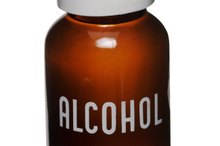What Are the Dangers of Methane Gas?
Methane gas comes from the earth and it comes from our bodies. Methane is non-toxic and it can be harnessed as an energy source. However, methane is highly explosive and it can cause death by asphyxiation. It is important to understand how to deal with the hazards associated with methane.
Explosion
Methane can become explosive when mixed with other chemicals in levels as low as 5 percent. You can smell methane when a utility company works on the sewer system and hydrogen sulfide naturally mixes with methane. If you are in a place where you can detect an unpleasant "rotten egg" smell, the methane levels may be high enough to become explosive. In high concentrations, methane gas can be deadly when ignited 1. Natural methane from beneath the earth has caused disastrous mining and oil rig explosions.
- Methane can become explosive when mixed with other chemicals in levels as low as 5 percent.
- You can smell methane when a utility company works on the sewer system and hydrogen sulfide naturally mixes with methane.
Asphyxiation
Health Dangers of Gas Grills
Learn More
Although it is non-toxic, methane is a "simple asphyxiant" because it can displace oxygen, which is needed for breathing. Oxygen levels below 16 percent can be dangerous and levels below 10 percent can be deadly. There are no standards governing the permissible amount of methane in the air at home or in the workplace, but the minimum oxygen content for any place where people need to breathe is 18 percent.
Carbon Monoxide Poisoning
Although methane on its own isn't poisonous, it has the potential to become poisonous when mixed with other substances. That potential exists when natural gas, which is 97% methane, is burned in houses, offices and businesses. The burning of natural gas without proper ventilation can produce carbon monoxide, a deadly gas that is difficult to detect. Relatively low levels of carbon monoxide can cause dizziness and nausea within 20 minutes and death within two hours. Higher levels can kill within three minutes. The Centers for Disease Control and Prevention estimates that carbon monoxide poisoning kills 500 people each year.
- Although methane on its own isn't poisonous, it has the potential to become poisonous when mixed with other substances.
- The burning of natural gas without proper ventilation can produce carbon monoxide, a deadly gas that is difficult to detect.
Related Articles
Writer Bio
Kip Doyle, the managing editor at a weekly newspaper in Western New York, has over 12 years of experience researching and participating in sports and physical fitness. Doyle, who also writes about technology, music and pop culture, has been published by several newspapers, as well as websites like Punknews.org.








